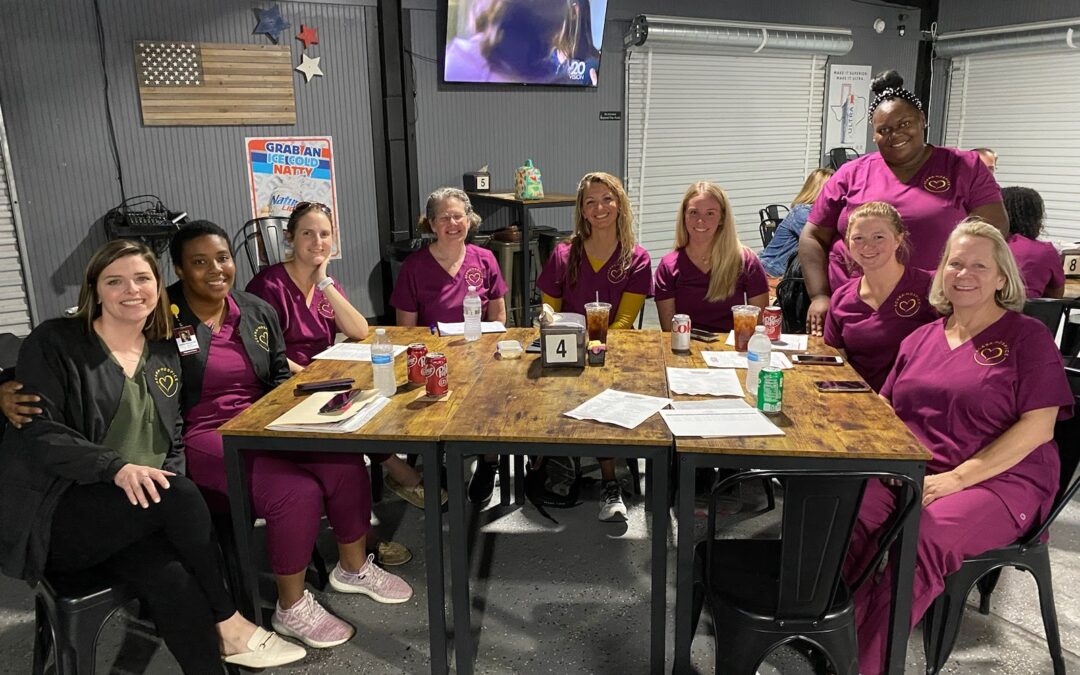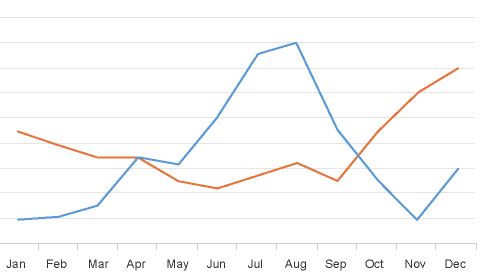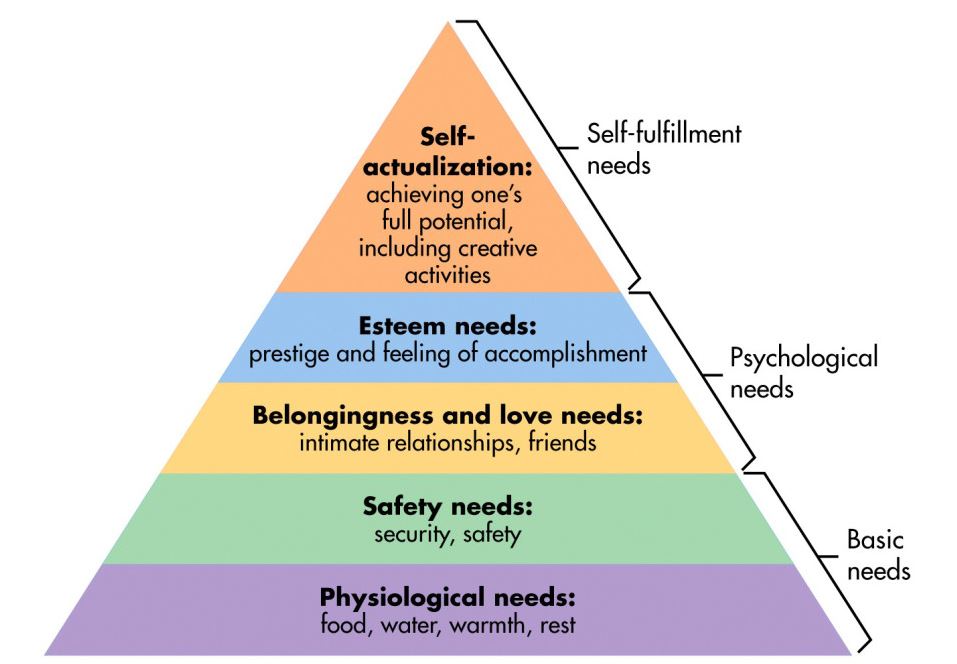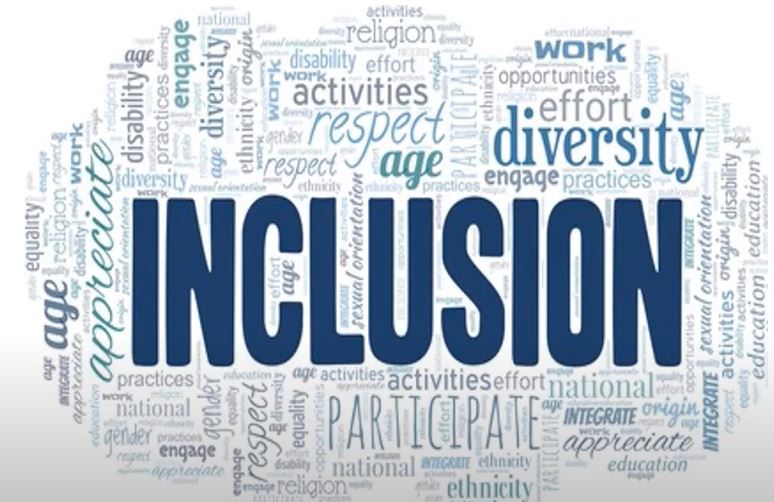
by editor | Oct 13, 2024 | Compliance and Regulatory - Directors, Hospice 101 - Aides, Hospice 101 - Chaplain, Hospice 101 - Nurses, Hospice 101 - Office Team, Hospice 101 - Social Workers, Interdisciplinary Team, Regulatory Compliance, Rules and Regulations - Chaplains, Rules and Regulations - Nurses, Rules and Regulations - Social Workers
The hospice interdisciplinary group (IDG) creates a patient’s plan of care and provides holistic care to the patient, caregiver, and family. Hospice Conditions of Participation require the IDG to “review, revise, and document the individualized plan as frequent as the patient’s condition requires, but no less frequently than every 15 calendar days.”
As such, the IDG meet at a minimum every 15 days. In many hospice organizations, the interdisciplinary group meets weekly to review patient status and to determine if changes are required to a patient’s plan of care. It is important that during the IDG meeting patients’ care plans are reviewed and updated based upon patients’ assessments. Timely and accurate documentation is critical; this documentation may be reviewed by surveyors and by CMS to ensure compliance with regulations.
Who is required to attend an IDG Meeting
Required members of the IDG meeting include:
- A doctor who is an employee or under contract with the hospice agency
- Registered nurse
- Social worker
- Pastoral or other counselor
These four individuals are minimum participants in the IDG meeting. If one of these members i missing from the IDG meeting, the meeting does not meet Medicare regulations and it is considered as if the meeting did not take place. . Care must be taken to ensure that the minimum requirement – IDG meeting with the participation of at least these four individuals at a minimum of once every 15 days – is met.
Additionally, a staff member is typically identified to serve as the scribe for the IDG meeting. The scribe captures any changes to a patient’s plan of care that are agreed upon during the meeting.
What activities occur during the IDG meeting?
When the meeting begins, all participants sign the meeting sign-in sheet. These sheets serve as documented proof that the hospice has met the Medicare Conditions of Participation – that the required members of IDG participated in the meeting. Sign in sheets are stored in a place that is accessible for review upon the request of auditors or surveyors.
Prior to the IDG meeting, a list is drawn up of the patients who will be reviewed during the meeting. For each of these patient’s members of the care team provide an update on the patient’s current condition, highlighting any concerns. The team then discusses the plan for the upcoming two weeks.
Patients may be ordered for discussion as follows:
- Deaths
- Admissions
- Recertifications
- Evaluation
Let’s review each of these in detail.
Deaths
Each death since the prior IDG meeting is reviewed. The team discusses whether bereavement has been requested or declined. In the case where bereavement has been requested, the individuals who will be receiving bereavement services are identified. Any further details or concerns on the services that will be provided are discussed.
Admissions
The RN Case manager discusses any new admissions since the prior IDG meeting, including patient diagnosis and hospice eligibility criteria. Visit frequency is discussed, hospice aide services, and patient psychosocial needs. Typically, all team members partake in this discussion including a discussion about patient medications and prognostic indicators.
Recertifications
At this stage in the IDG the team discusses all patients who are the end of their benefit period and need to be recertified. Any face-to-face visits that were conducted will be discussed and any that are still pending will need to be scheduled. For patients who were evaluated and are found not to meet criteria, the team discusses how to notify the family and details on how to transition the patient off of hospice care.
Evaluations
All remaining patients on the list are reviewed by the members of the IDG. The team discusses whether any changes to the plan of care are needed, whether any medications need to be changed or if any additional support is required (e.g., chaplain, volunteer). The plan of care may be updated if the team agrees that a change in visit frequency is required.
Updating patients’ plan of care
While each patient is discussed, any changes to the patient’s plan of care are entered into the patient’s chart, which is signed by the medical director.

by editor | Oct 7, 2024 | Compliance and Regulatory - Directors, Hospice 101 - Aides, Hospice 101 - Chaplain, Hospice 101 - Nurses, Hospice 101 - Office Team, Hospice 101 - Social Workers, Interdisciplinary Team
Hospice care is patient- and family-centered, where the patient’s and family’s preferences and needs drive the care plan.
The hospice interdisciplinary group (also referred to as Hospice IDG or IDG), also referred to as the interdisciplinary team (IDT) is a team of healthcare professionals who work together to create a plan tailored to the needs of hospice patients. The IDG is crucial because it reflects the fundamental principle of hospice care: a multidisciplinary and holistic approach to treating a patient. Hospice care is not just about managing medical symptoms; it involves addressing the physical, emotional, social, and spiritual needs of the patient and their family. This comprehensive care model requires combined expertise of different healthcare professionals working together as a cohesive team.
Multidisciplinary and 360-degree approach
The idea of a multidisciplinary approach is central to hospice care because a single healthcare professional cannot fully address the complex needs of a patient at the end of life. Hospice patients often experience pain, emotional distress, social isolation, and spiritual concerns, all of which need to be treated so that the patient has a peaceful and dignified end of life experience. Each of the members of the IDG can address different aspects of hospice patient needs.
Physical needs: Managed by the physician and nurse. The physician provides medical direction and oversees patient care while the nurse manages the patient’s medical needs such as pain control and symptom management.
Emotional and social needs: The social worker provides emotional and social support, caring for emotional health, caregiver stress, and family dynamics. Consideration is also given to connecting the family with community resources
Spiritual needs: These are managed by the chaplain, who offers spiritual care and counseling, based on the patient’s and family’s beliefs. The chaplain helps patients and families explore spiritual concerns, questions of meaning, or religious beliefs in the context of their journey.
Daily living needs: Hospice aides assist with personal care like bathing, dressing, and grooming. They ensure dignity and comfort in activities of daily living like bathing, dressing, and grooming.
Companionship and support: The hospice volunteer offers companionship and practical help, like errands or respite for family caregivers.
By involving individuals from different disciplines, hospice care can take a 360-degress approach to a patient’s needs. It means that every aspect of care – physical, emotional, social, and spiritual – is addressed by someone with the expertise to manage that particular dimension. This all encompassing approach is what makes hospice care unique and effective.
Are all member of the IDG required per CMS regulations?
Per CMS regulations, only core members must always be part of the IDG to ensure that hospice care addresses every critical aspect of the patient’s experience. Four disciplines are considered core required members of the team. These include:
- Physician
- Registered nurse
- Social worker
- Chaplain
Some professional members may be included in the IDG as needed, depending upon patient’s individual circumstances. These include:
- Hospice Aide
- Volunteer
- Therapists
- Bereavement Counselor
How is the IDG aligned with regulatory standards?
CMS requires that hospice care involve an interdisciplinary approach because it reflects the need to treat the “whole” patient, not just their medical condition. The IDG ensures that the care plan is tailored to the patient’s evolving needs and that it incorporates feedback from multiple disciplines to achieve the best outcomes. The interdisciplinary model is also a regulatory requirement under the hospice Conditions of Participation (CoPs). As such, surveyors will review the functioning of the IDG during inspections to ensure compliance. A well coordinated interdisciplinary team ensures regulatory compliance and quality patient care.
Why is the interdisciplinary hospice team essential?
Hospice care is patient and family centered, meaning that the patient’s and family’s preferences and needs drive the care plan. The IDG works collaboratively to ensure that the care plan remains flexible and responsive to changes in the patient’s condition. As hospice patients often experience rapid changes in health, having professionals from different disciplines ensures that all aspects of care can be addressed promptly and effectively.
In summary, the IDG reflects hospice’s holistic, multidisciplinary approach to care by ensuring that all dimensions of the patient’s well-being are addressed. Required team members focus on medical, emotional, and spiritual care, while optional members can be added to meet unique or additional needs. This alignment ensures that hospice remains flexible and patient-centered.

by editor | Mar 22, 2023 | Human Resources, Interdisciplinary Team
How can your hospice organization find out what your employees are thinking? How do you know if your employees are satisfied? Dissatisfied? How do you know if employee satisfaction varies across different agencies in your organization? Do you have a systemic problem in one of your agencies? Is one of your regions better or worse than the others?
Using employee surveys to measure employee sentiment
Hospice organizations typically conduct employee surveys to try to dig into this information. Employee surveys are prepared by the corporate office and survey the entire organization – that is – all hospice agencies across the entire organization. The surveys are typically conducted no more frequently than once per year and involve significant planning and cost. A survey response rate of 70% is considered a good response rate.
Organization may also conduct more targeted “pulse surveys” – to gather the employee sentiment on a targeted issue. Pulse surveys are run more frequently, and a 50% response rate is considered a good response rate.
Using public data sources to measure employee sentiment
However, there is another valuable source of employee sentiment that is often overlooked by hospice organizations: both current and former employees post valuable company reviews on public employment websites. These reviews provide valuable and actionable insight that can be used to monitor employee sentiment, detect trends over time, identify differences between agencies or regions in the organization and a wealth of other useful information.
How can information from public websites be used?
How can a review from a public website be used to provide insight to a hospice agency? Let’s examine some reviews to see what insight can be gained.

Data points that we can gather from this review are the following:
- Rating: 5 star
- Employment status: current
- Date of review: March 10, 2023
- Type of employment: per diem
- Job role: Home recovery RN
- Location: Marshfield, WI
- General comments: supportive management
Here is another review:

Data points that we can gather from this review are the following:
- Rating: 5 star
- Employment status: former
- Date of review: April 10, 2017
- Type of employment: contractor
- Job role: data entry
- Location: Brentwood, TN
- General comments: excellent company to work for
Here is a third review:

Data points that we can gather from this review are the following:
- Rating: 3 star
- Employment status: former
- Date of review: August 1, 2021
- Type of employment: full time
- Job role: Patient care coordinator
- Location: Vestavia Hls, AL
- General comments: management does not respond to input
How can the data be stored so maximum value can be extracted?
A hospice agency should store the data in a database format – either in a database or in a spreadsheet – so that maximum value can be extracted. By storing the data in this manner, metrics of interest and can be created. Performance over time can be monitored. We provide an example below. Suppose the three reviews above are for three different locations for the same hospice organization – one for an agency located in Marshfield, WI, one for an agency located in Brentwood, TN, and one for an agency located in Vestavia Hls, AL. The data can be stored in a spreadsheet as follows:

Additional columns in the spreadsheet can be added to provide additional information. For example, categories of interest may be:
- classify the employee type by categories such as clinical, corporate, office team, etc.
- classify the city / state by regions in the organization.
As the number of rows in the spreadsheet grows patterns can be identified and valuable metrics can be created and monitored – in time and over time.
Where can you learn more?

by editor | Jan 29, 2023 | Human Resources, Interdisciplinary Team
Maslow’s hierarchy of needs is a theory that can be used to provide leaders and organizations with guidance on how to motivate employees. But what is this hierarchy and what is Maslow’s theory?
What is Maslow’s Hierarchy of Needs?
Maslow developed his theory on the Hierarchy of Needs in the 1940s. The hierarchy suggests that people are first motivated to fulfill basic needs before they move on to more advanced needs.
The theory states that there are five fundamental human needs that can be represented as a pyramid. Each of the five needs builds on the prior need. Individuals want to meet needs at a lower level before progressing to needs at a higher level.
The highest-level need in Maslow’s hierarchy is self-actualization, where an individual achieves self-fulfillment.
How does Maslow’s Hierarchy of Needs relate to leadership?
A good manager understands this hierarchy of needs and leads his team so that he is meeting each employee at the employee’s current level of need while simultaneously encouraging the employee to continue to move up the pyramid so that the employee eventually achieves self-actualization. In the workplace, self-actualization translates to an employee’s desire to maximize his potential at work.
What are the levels of the hierarchy?
In Maslow’s hierarchy, Level 5 is the lowest level and Level 1 is the highest level. An individual or employee will start at a lower level and move up levels as he tries to achieve the highest level in the hierarchy.
Level 5: Psychological needs – survival
This is a most basic need for survival. Employees at this level want to feel secure that they have a steady income.
Level 4: Safety and security
Managers and leaders need to make employees feel secure. Some managers do not realize this and think that employees will work harder if they are “kept on their toes.” But this strategy usually fails. Rather than working harder, employees become obsessed with job security.
- How can a leader make employees feel secure?
- Communication: Share the big picture with employees.
- Clear rules: Employees should know where they stand at all times
- Be supportive: Support employees if they are struggling or if they fail
- Be consistent: Be the same every day
- Be fair
Level 3: Belonging (social needs)
Employees enjoy a team environment and a social workplace.
- How can a leader create a social environment and a feeling of belonging?
- Conduct team meetings
- Create an area where people can gather, e.g., for coffee
- Encourage a feeling that people are a part of the team
- Organize social events outside of work
Level 2: Esteem/status
Employees want to be noticed, on occasion, and to stand out for their accomplishments and for what they do better than others. People like to feel important, occasionally.
- How can a leader meet this need of employees to feel important?
- Give employees regular recognition
- Spend time with employees
Level 1: Self actualization
Self-actualization is maximizing an self-fulfillment where an individual discovers his potential and uses his skills to the utmost. This is the highest level of Maslow’s hierarchy, where employees are maximizing their potential at work.
- How can a leader help employees maximize their potential?
- Give employees ownership of tasks or projects
- Empower employees
- Help employees find ways to advance in their careers
What defines a great organization?
Maslow believes that in a great organization, employees will be at the level of self-actualization. That is, all employees must achieve Level 1. For employees to achieve Level 1, leadership must support employees through all the lower levels of the hierarchy. The pyramid will crumble if employees are lacking the supporting levels.
Further, leadership must make it possible for employees to achieve self-actualization. Employees need to be trained, to acquire new skills, and to have an environment where they gain a sense of satisfaction. A good leader will learn his employees’ potential and create an environment where people are trusted, can flourish, and are given important tasks to complete. A good leader will create an environment where employees can achieve self-actualization.
Where can you find more information?

by editor | Dec 11, 2022 | Human Resources, Interdisciplinary Team
Hospice agencies rely on the successful coordination of their teams to deliver quality care to their diverse customers and clients who have varying demands and needs. These teams are often highly diverse – with varying cultures, genders, and age ranges.
But simply combining individuals with different backgrounds is not sufficient to ensure customer satisfaction and client success. It also requires inclusive leadership – leaders that create an inclusive environment where team members feel that they belong and matter, where a diverse workforce is respected, and where team members with varying opinions and perspectives feel heard and respected and are willing to share, contribute, and collaborate.
What are the benefits of inclusive leadership?
Workplaces with inclusive leadership are not only nice to have; they are also shown to improve performance. Teams with inclusive leaders are 17% more likely to be high performing, 20% more likely to make high quality decisions, and 29% more likely to be more collaborative, as discussed in a study published by Deloitte.
What are the characteristics of inclusive leadership?
There are several traits that are commonly observed in inclusive leaders:
- Commitment: See the value in diversity and inclusion and holds themselves, the team, and the organization accountable to ensure equality is factored into all processes
- Humility: Modest about their capabilities, admit mistakes, and create space for others to contribute
- Aware of bias: Aware of personal blind spots and flaws in the organizational processes, and work hard to ensure meritocracy
- Cultural intelligence: Exceptional leaders stretch their curiosity and learn about customs that are important to different employees. They aim to boost the level comfort to build inclusivity.
- Effective collaboration: Empower others and focus on team cohesion
- Curiosity about others: Be curious and learn about other employees, acknowledge the value that each individual team member brings to the whole
How can leaders exercise these traits?
Leaders need to practice these traits and get regular feedback on their performance. How can they do this and how can they get regular feedback on their performance?
- Establish a diverse personal advisory board – Leaders can create a group of peers with whom they have regular contact and who they know are willing to give them direct and straightforward feedback on day-to-day interpersonal behavior. Members of their advisory board can give them feedback on activities such as whether they are favoring certain groups, whether their language is language is biased, whether they are inclusive during meetings, and the like.
- Leaders can immerse themselves in new/uncomfortable situations that involve diverse stakeholders, providing them with the opportunity to disrupt preconceived ideas.
- They can share learning journeys that involve recognizing and addressing bias. This can be in the context of town hall meetings or 360 assessments with management. These settings allow a leader to role model the importance of humility.
Summary
Diversity is at the heart of every organization. If properly managed, it can enhance the success of an organization but if improperly managed, it can lead to dissatisfied employees and inability of an organization to achieve its goals. A successful leader must promote and encourage diversity in an organization, as this will draw out each individual employee’s talents and lead to improved organization success.
Where can you find out more?





